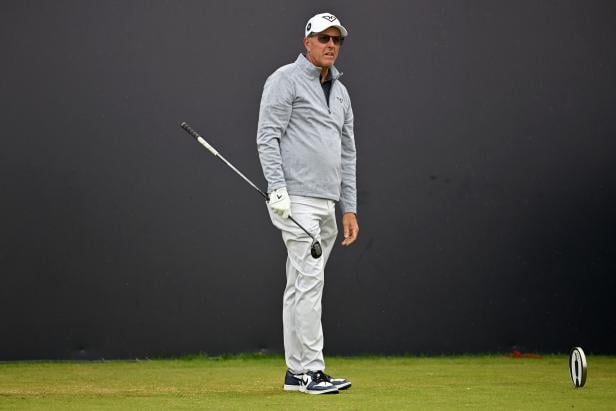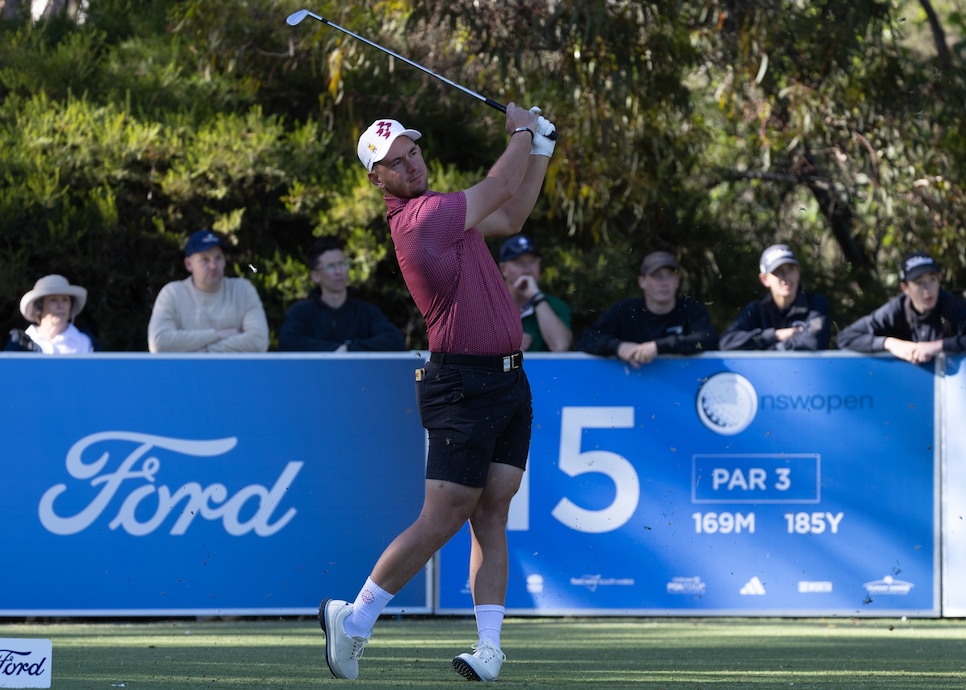Open Championship 2024: Phil Mickelson knows he’s being written off as a golfer, but he’s not giving up yet – Australian Golf Digest

- by Admin
- July 17, 2024

Over the course of a career that can perhaps best be described as “colourful,” Phil Mickelson has been accused of many things. His judgement has been questioned, on and off the course. His choice of shot in certain situations—see the final hole of the 2006 US Open at Winged Foot—has been second-guessed. And his decision to leave the PGA Tour and move to LIV Golf has been analysed to death. But few have questioned the innate golf intelligence of the 54-year-old six-time major winner.
Well, maybe once.
Before Mickelson finished third in the 2004 Open Championship at Royal Troon, his record in golf’s oldest major was, to put it mildly, awful. In 11 starts prior to 2004, the then Masters champion had missed the cut twice amid a run that included a T73, a T66 and a T59. His best finish was T11 at St. Andrews in 2000. Hardly what one might expect from one so obviously gifted. Clearly, there was a problem.
“It took me so long to figure out links because it’s not the style of golf I played growing up,” said Mickelson said on Tuesday. “No one showed me how to do it. Sometimes you need someone to do that, even when it is so obvious. Sometimes you just overlook things. That was me back then.”
The key for golf’s greatest-ever left-hander was ball-flight. While Mickelson had obviously been capable of hitting shots low prior to 2004, he did so with excess spin that made control a lot more difficult, especially in the heavy winds that typically prevail on UK seaside courses. So it was that, with the help of coach Dave Pelz, Mickelson set about fixing his fault.
And by the time he reached Troon, he was ready.
“2004 was the first time I had worked with Dave and figured out how to take spin off my shots and hit the ball lower with control,” he says. “I had a really good season in 2004, missing the playoff here by a shot. It was the first time I was able to flight the ball properly without so much spin and so I had a real idea where the ball was going to end up, both off the tee and into the greens. When I mastered that it represented the first time I was able to play links golf effectively.
“That fact gave me a lot more confidence,” he continues. “I had so many more shots in my arsenal, which helped me in the States, too. Getting to back pins was so much easier for me. I remember playing the 13th at Pebble Beach and being capable of hitting my approaches close to the back-left pin that had always frustrated me. I made birdie there both times I won the AT&T in 2012 and 2019. And I did it by hitting a 7-iron from only 113 metres out. That was a shot I learned for playing over here.”
Of course, Mickelson’s affinity for Troon was further enhanced by his participation in what has to be one of the Open’s most famous duels. In 2016, the by-then five-time major champion (including the 2013 Open at Muirfield) shot 17 under par for four rounds—and didn’t win. Henrik Stenson, enjoying the week of his life, shot 20 under to claim the claret jug by three.
“I just played so well in 2016,” says Mickelson, his voice still betraying hints of regret eight years on. “It was some of the best golf I ever played. I had so much control of my ball, even in strong crosswinds and the heavy air you get over here. This is a tough course, and you have to be very precise. I was that week and gave myself a lot of opportunities. But for the first time in my career, I played my best golf and it wasn’t enough. I took some positives and negatives from that. It was a shot to my ego. I had always assumed that my best golf would win. But that week I played as well as I could and came up short.”
Warren Little/R&A
Despite shooting 17 under for the tournament, Mickelson still lost by three to Stenson at Troon in 2016. “It was a shot to my ego,” Mickelson says. “I had always assumed that my best golf would win. But that week I played as well as I could and came up short.”
This time round, Mickelson arrives on the back of run of form that is unlikely to see too many punters rushing to any of Troon’s bookmaking establishments; in 10 LIV Golf starts in 2024, he’s finished inside the top 20 just once and has two missed cuts and a T43 in the three majors. But that may be an oversight. Already the oldest man ever to win a major championship, Mickelson feels age is less of a factor than it might be. Then there is his obvious affection for the course this week. Knowing without question that you are playing somewhere that has previously produced good results is a valuable—albeit intangible—asset for every golfer.
As usual too, Mickelson is making positive noises, although he isn’t prepared to reveal all of his “secrets.”
“This week I’m actually trying to do a lot of the things I did to prepare in 2016,” he reveals. “I’m getting ready to hit in a lot of slice-winds. I’ve worked a lot on hitting draws back into that breeze, which is exactly what I did eight years ago. There are holes out there that allow me to take advantage of being left-handed and be a little more aggressive. They are just a little more comfortable for me. Then again, there are some holes that are the opposite. On those I have to be a little more defensive and careful.
“I see the breaks on the greens so I’m able to putt well,” he continues. “I like the type of shots I can hit into the greens. There are a couple of nuances to this course that I’ve learned from my time practicing here. That makes some of the difficult shots easier. To be honest though, I’ve been working hard on every aspect of my game. The Open is the complete test of your golf skills. The only thing that isn’t so demanding here is length off the tee. It doesn’t matter, especially on the front nine. As I said it’s all about controlling the flight of the ball. That’s the thing you absolutely must have. You have to be able to shape shots with ways into the wind. An incredible touch around the greens doesn’t hurt either.”
All of that sounds a lot like vintage Mickelson. Whether he has one more great week in him at the highest level remains to be seen, of course. But it would be dangerous indeed to write him off completely.
“I’m having a lot of fun right now,” he claims. “I’m making progress. And this is a course that allows my game to flourish. I really don’t feel I have anything to prove. Regardless of what people might be saying about me, I have a love of playing golf. I love to compete and contend. That’s why I’m working hard. Being a part of these major championships means a lot to me.”
The Latest News
-
November 15, 2024The schools of great knocks: Where Australia’s Test cricketers were educated
-
November 15, 2024Former Sri Lanka cricketer Samaraweera gets new 10-year Australia ban
-
November 15, 2024Former Test cricketer handed second ban over allegations of inappropriate behaviour
-
November 15, 2024National Associate Championship goes Wil’s way – PGA of Australia
-
November 15, 2024Recent Sponsorship Announcements Shaping Australian Sport for 2025 – Ministry of Sport





